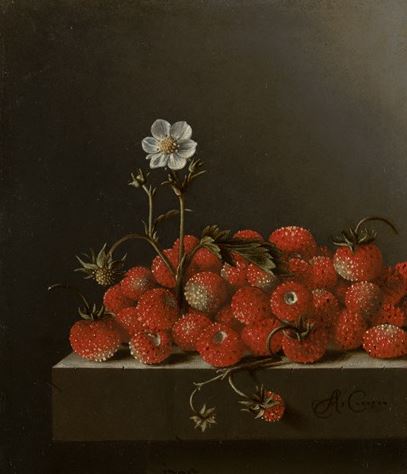Contemporary still life photography is still a popular genre of art, and advancement in technology has allowed photography to contribute massively to the amount of still-life artwork circulating. More modern takes on still life artwork often raises awareness of current affairs, such as climate change, issues within society, waste and technology, while much of the work still often links back to the original themes of exploring mortality and social structures. With the introduction of a wider range of subjects to chose from, still life artwork has blossomed

Austrian photographer Klaus Pichler wanted to raise awareness of the issue of food waste around the globe, and the effect we have on the climate, caused by the carbon footprint we leave through shipping goods around the world. His still-life photography project, titled “One Third”, involved rotting food in his bathroom over a period of 9 months, and photographing the decaying items in a way that very closely reflects classic still life artwork.

Pichler’s project was centered around raising awareness about the global issue, that is, wasting food. Klaus became aware of the fact that 1/3 of all of the worlds food, produced for human consumption, goes to waste, while in other areas of the world over 900 million people are starving. Pichler felt personally connected to this project, as he grew up in an area that required him to raise and eat his own meat/produce. In order to reflect this personal attachment to the project, Klaus decided against renting a studio to complete his work, and instead developed the project in his own apartment. Klaus can be quoted as saying, during an interview with National Geographic:
“I was definitely not the first one who was making photographs of rotting food but to make myself credible, I decided not to rent a studio but to make it in my apartment. This was quite a conscious decision. When I am working on a project, I want to really be in the middle of it.”
This quote clearly reflects Pichler’s personal connection to his project, and shows that the meaning behind his work is something that he feels very passionately about. This passion is clearly reflected in the dedication he had to his work, allowing food to rot in his own bathroom for months on end, with the smell of decaying chicken leaving him unable to sleep for nights at a time (according to National Geographic).

Place of production: Kolontar, Hungary
Production method: Factory production * Time of production: All- season
Transporting distance: 196 km * Means of transportation: Truck
Carbon footprint (total) per kg: 5,82kg * Water requirement (total) per kg: 3061 l
Price: 1,39 € / kg
this caption draws attention to the requirements needed in order to package and transport these eggs, only for them to be wasted.
Klaus also put thought into the caption of his images, using a description of the transportation, place of production and carbon footprint of each of the foods he photographs. This took a large amount of research on Pichler’s part, yet his enthusiasm to raise awareness of the massive waste of resources (and effects on the climate) produced by the production of foods, and then the way these foods are wasted, allowed him to collect the records of all of the foods that he photographed, using the captions to further reflect the food waste crisis of the world.
Pichler’s project falls within the category of still life, as it makes use of arrangements of rotting foods (often including the classic still life food; fruit). Pichler also makes use of silverware and intricate dishes, cups and cutlery, which contrasts the grotesque reality of the decaying food that it holds. This is perhaps a remark towards another aspect of food waste, as first world countries enjoy wealth and the ability to choose to waste food (reflected by the detailed cultery/dishes) whereas third world countries are left to starve. The simplicity in the final image, yet detail within the process and meaning of Klaus’ work, runs parallel with the more classic works of still life, which include elaborate meanings and metaphors, and would have involved the collection and arrangement of many objects and foods.

Klaus Pichler, STRAWBERRIES from the project “One Third”, 2013 
Adriaen Coorte, Still Life with Wild Strawberries, 1705
Many similarities can be found between the 2 works found above. The dark background used to contrast and draw attention to the colours in the subject, the use of food (strawberries) as a subject, and the arrangement of the strawberries themselves are all similar, yet the meanings behind the two pieces are vastly different.






